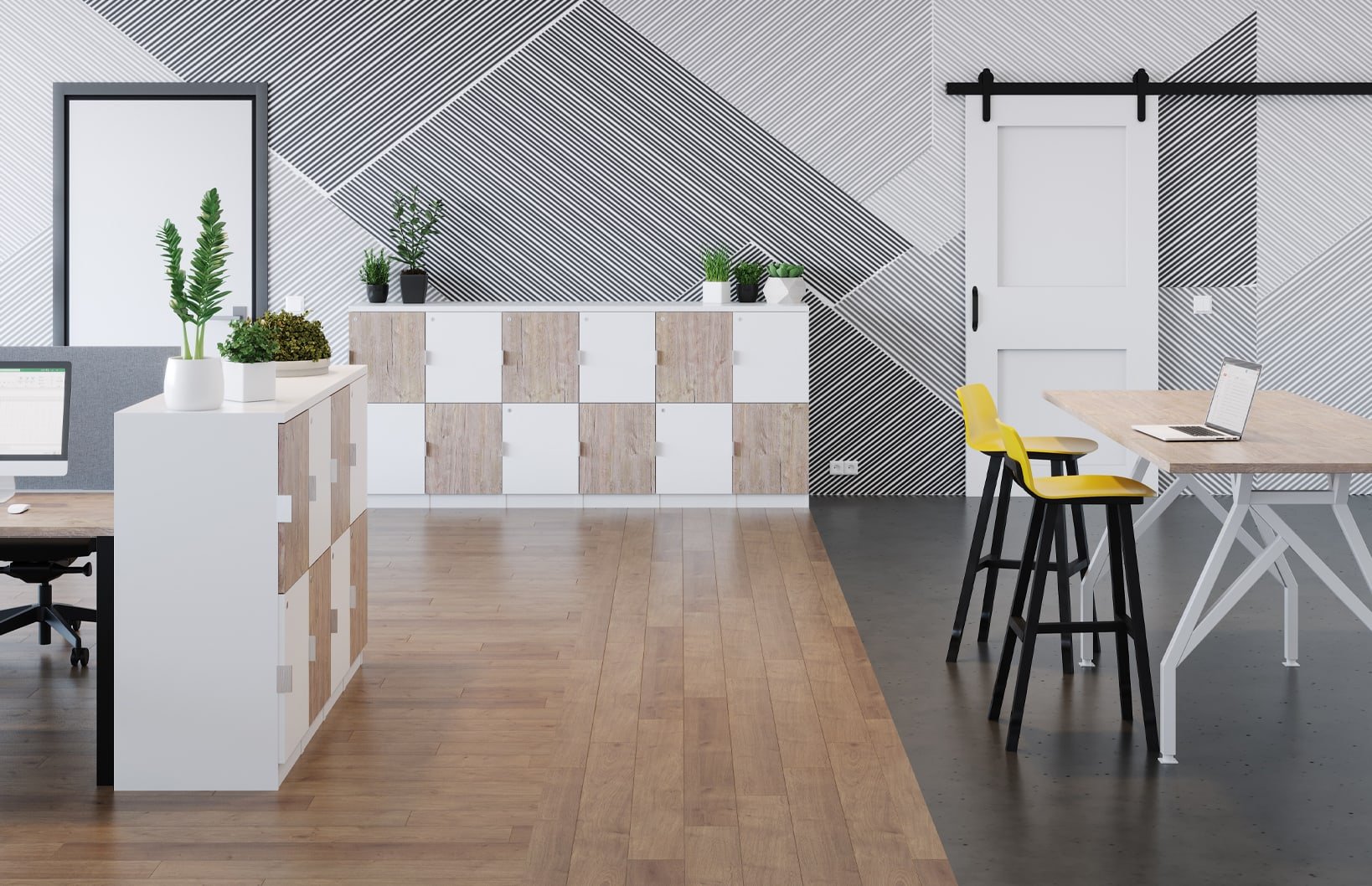Photo by DeskMakers
Lockers are an obvious but often overlooked amenity in shared workspaces. As well as providing storage so that workers can enjoy an uncluttered environment, lockers can be used to define spaces and create boundaries between work and non-work areas.
Photo by Office Specialty
Designing for today’s flexible workspaces
The way designers specify lockers has evolved.
In today’s (good) offices, lockers are a far cry from the utilitarian storage facilities we associate with the dim and characterless workspaces of the 1980s.
Lockers are multifunctional, making them the perfect fit for flexible workspaces that may require reconfiguration at very short notice.
For example, tall lockers are often used to create space division in a floor plan and act as a functional storage wall. Additionally, counter-height lockers are often gathered together to create a standing workspace for employees to use.
Lockers can be utilized as:
Storage
Dividers/ partitions
Work surfaces or countertops
Seating
Standing desks
Some companies design locker systems in line with the customer’s individual taste and needs. In today’s uncertain landscape, needs can change quickly, so agility is important.
The use of remanufactured storage products
The ultimate goal is to avoid waste from ending up in landfill.
In 2018, the EPA had estimated approximately 10 million tons of office furniture are discarded each year in landfills. Recycling office furniture conserves labor and manufacturing energy, as well as cuts disposal costs of almost $100 million. The amount of labor and energy required to alter an existing product during remanufacturing is 85 - 95% less than required to manufacture a new product.
Office furniture represents a significant investment for most companies and buying recycled (remanufactured) is an excellent cost-cutting opportunity, generally savings of 30 - 50%.
For more information on our remanufactured process, click here.
Designing for employee wellbeing
With flexible working becoming more widespread, people’s personal and professional lives are intersecting.
Yet in an attempt to avoid burnout and improve their overall wellbeing, people are also establishing boundaries to create a clearer distinction between work and life. And secure, personal storage spaces – as functional as they are – can help.
Original article by Allwork.Space


